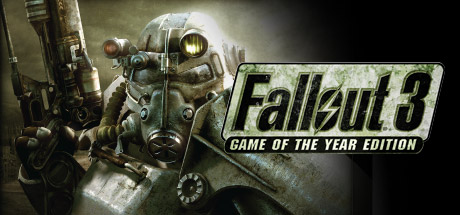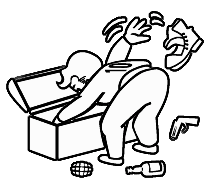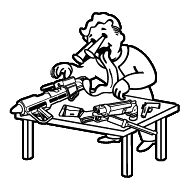To celebrate Fallout‘s 20th anniversary, I figured it would be fun to completely start from scratch and tool the Bethesda Fallout game series for new, fresh playthroughs. Since I have now spent an evening’s worth of catching up on, and customizing, each of the Fallouts, I figured I might as well put my lists out here. In fact, I have actually written an article on Planescape: Torment (hilariously obsolete today, with the new Enhanced Edition out) before, and it’s a ton of fun to share this type of info!
I’m personally a fan of a “soft touch” style of modding, so the purpose here was to create a list of
- recently updated,
- light, and
- simple
modifications that work to make Fallout 3 and Fallout: New Vegas more playable. Modding Bethesda games is pretty fun, as there are so, so many options. If you get too trigger happy, however, it can also be quite frustrating – much like the games themselves!
If you do want to follow this tutorial, either as your setup, or as a basis for adding on more modifications, for the purpose of playing and/or purchasing Fallout 3, I recommend the Fallout 3: Game of the Year Edition on GOG.com – simply because it doesn’t have any of the Steam or GFWL dependencies.
This tutorial operates under the assumption that you are on Windows, have all DLC (i.e., the GOTY edition), and are running Fallout 3 version 1.7.0.1.
Mod Organizer

Every Bethesda game modding process starts with the selection of a suitable mod manager. Although there are several good alternatives, Mod Organizer is, in my experience, by far the best application for the purpose today.
Mod Organizer is very powerful, reliable, and simple to use once you go through its built-in tutorial once. It has several key features: Most importantly, the program can be hooked to handle Nexus downloads. It also uses a virtual data structure that stores your mods in a separate folder from your actual game files, keeping your actual game installation pristine. This makes the installation (and uninstallation!) of mods very straightforward should you want to start from scratch.
For both Fallout 3 and Fallout: New Vegas, you will want to use the older Mod Organizer version 1.3.11 – more recent beta versions of the program (that support newer games, like Fallout 4 and Skyrim) unfortunately have some incompatibilities with the older games, and as such, I was unable to get them to work on the earlier games.
You will want to make a separate Mod Organizer 1.3.11 program folder for every game you plan to organize. In this case, this means two folders – one folder for Fallout 3, and one for New Vegas. The mods will be downloaded from Fallout 3 Nexus, and you will need an account.
Prerequisites
Note: Before doing anything else, make sure to run the Fallout 3 game launcher (FalloutLauncher.exe) once, setting your graphics to “ultra,” as well as configuring your monitor resolution and aspect ratio. Once you have saved your settings, the launcher builds the necessary profile directories and files for you, including fallout.ini and falloutprefs.ini, which can then be modified directly through ModOrganizer.
For Fallout 3, the main patches are as follows:
It’s best to start here! The LAAE patch simply allows the Fallout 3 .exe to use up to 4gb of memory instead of just 2gb on 64-bit systems, ensuring that there is memory available for mods. You apply the patch by moving your Fallout3.exe – after first making a backup, of course – to the LAAE folder you have extracted, and running the included batch script. After that, copy the modified file back to the main installation folder (i.e. “\Fallout 3\).
If you do own the Steam version instead of the GOG one, you may need to run the following at this point:
Next, we need to install the foundation that other mod functionality, as well as game stability, is built on:
These are all installed into the main folder of your Fallout 3 installation (i.e. “\Fallout 3\Data\FOSE”), not through Mod Organizer. The two FOSE plugins, stutter remover, and the anti-crash (though made for New Vegas, also works with Fallout 3 as long as you install the plugin into the correct folder), are installed into the FOSE plugins folder in “\Data\” (i.e., “\Fallout 3\Data\FOSE\Plugins”). Make sure to read the instructions to get the .dlls installed right. The stutter remover comes with its own .ini file, sr_Fallout_Stutter_Remover.ini, that can be further configured if you run into problems.
After the LAAE patch, FOSE, and its two plugins are installed, you can move on to Mod Organizer.
Install or extract the 1.3.11 build into a folder separate from your Fallout 3 folder, and give it a suitable name – “ModOrganizerF3” or something akin to it, so you know which of your Mod Organizer folders is meant for which game. Make sure you run the program as an administrator for write permissions! Once you do, it should recognize your Fallout 3 installation. If you have never used the program before, allow it to teach itself to you by going through the built-in tutorial once.
Note: For Mod Organizer to launch Fallout 3 properly, you need to make sure to do the following: First, under “Configure Profiles”, you need to check “Automatic Archive Invalidation.” This makes sure your mod content is actually applied in-game. You also need to make sure that in the right-hand “Archives” tab, all the main data files (Fallout – MenuVoices.bsa, Fallout – Meshes.bsa etc.) are all ticked & selected so that the game does not crash at boot when these archives are missing.
There are also some .ini tweaks to be made. These can be done entirely in Mod Organizer as long as you previously launched the Fallout 3 launcher, so that the required files were created. In my case, I settled for a few tweaks; you’ll find a ton of other changes should you wish to tinker with the configuration more:
To fallout.ini:
[Controls]
;Remove mouse acceleration
fForegroundMouseAccelBase=0
fForegroundMouseAccelTop=0
fForegroundMouseBase=0
fForegroundMouseMult=0
To falloutprefs.ini:
[Grass]
;push back the distance for grasses to fade from 3 to 5 cells (minor performance hit)
fGrassStartFadeDistance=18000
Modifications
 The installation order for modifications is often quite important, as mods are loaded one after another, with mods loaded later potentially overwriting either data in the main game files, or changes made by mods earlier in the load chain. There is a good rule of thumb: More important mods are loaded first, and newer and smaller mods are loaded later. If there is a conflict, Mod Organizer will tell you (with + and – symbols), and you can work out from there which mod you want to be the overriding one.
The installation order for modifications is often quite important, as mods are loaded one after another, with mods loaded later potentially overwriting either data in the main game files, or changes made by mods earlier in the load chain. There is a good rule of thumb: More important mods are loaded first, and newer and smaller mods are loaded later. If there is a conflict, Mod Organizer will tell you (with + and – symbols), and you can work out from there which mod you want to be the overriding one.
The first mod to install is:
Surprisingly enough, for Fallout 3, the “updated unofficial” patch is really the only “unofficial” patch that you need at this point.
Then, we shall add some finesse to the UI, and the game’s basic feature set:
Each of these mods has a very specific purpose. While UIO is not actually needed for anything we are going to be installing, there are so many other mods out there that take use of it that you should apply it nevertheless. Vanilla UI Plus is the most recent, up-to-date Fallout 3 UI mod right now, and while many players enjoy DarNified UI, I believe it’s better to simply improve and polish rather than completely overhaul the interface during your first run.
Talking about self-explanatory mods, SmoothLight tweaks PipBoy’s light, and Sprint Mod lets you sprint, two of the biggest things that you need in a game that is as dark and as tediously slow as F3. Do note that Sprint Mod adds itself as an inventory item for controlling settings. Enhanced Camera enables a visible body and player shadows. If you want F3 to behave more like a shooter, you could perhaps also add RH_IronSights – FOSE, or Dynamic Crosshair. I personally do not use either.
Next, important graphical patches:
Our focus is on enhancing the game’s existing look rather than changing it. For this purpose, one would want to install the fantastic Flora Overhaul “Dead Edition” together with its “Less grass for Dead Edition” patch, the latter coming after the former in load order. For better graphics effects, you’ll also want Impact, EVE, and EXE – loading in that order:
For lighting and LOD enhancements we want:
Interior Fog Remover comes with a fix to work with Realistic Interior Lighting, so keep in mind to grab that as well. The LOD noise texture set, then, consists of three files to download: meshes, normal maps, and color maps. If you really can’t stand the greenish look of the game, you could also try the classic Fellout (which is loaded before the three other above mods).
Finally, you’ll want to fix the lighting in Megaton, the first real town in the game, with some better lighting. It makes a big difference:
Aaaand this is where we stop. Hands off! ModOrganizer should select it for you automatically, but remember to launch your game through FOSE in by selecting it from the drop-down menu next to the Run button. Obviously, there is so, so much more you can do; high definition texture packs, additional weapons, custom storyline content, new enemies and NPCs, nude models, and all kinds of wild ENB presets. Personally, this feels like the sweet spot between functionality and performance for Fallout 3 – not touching anything in the game’s lore, or the core mechanics, but with glaring issues, annoyances, and problems mostly alleviated.
 The point is this: No matter how many mods you pile upon it, Fallout 3 is never going to be the perfect game. It’ll always be a little wonky, a little weird, and a little unstable. Once you begin to pile on the add-ons, you’ll have to face the need for more problem-solving tools, like LOOT, and Wrye Flash.
The point is this: No matter how many mods you pile upon it, Fallout 3 is never going to be the perfect game. It’ll always be a little wonky, a little weird, and a little unstable. Once you begin to pile on the add-ons, you’ll have to face the need for more problem-solving tools, like LOOT, and Wrye Flash.
For those that are either playing Fallout 3 for the very first time, or perhaps for the first time in a long while, these mods could, in my mind, be considered an appropriate cut-off point; you’ll either start spending too much time modding and not playing the game, or beginning to change the core of the game so much that it no longer resembles the real thing.
- Check out Fallout: New Vegas 2017 Soft Touch Modification Guide here soon!






0 Comments
Recommended Comments
There are no comments to display.